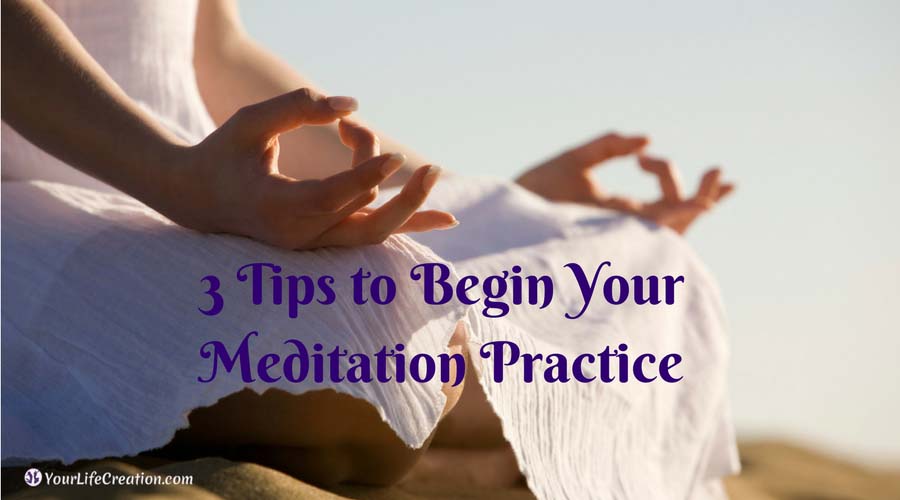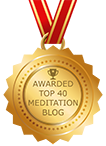
What happens when you begin your meditation practice is that you begin to feel into yourself. You become aware of how you feel physically and emotionally. You start to gain insight into your life and your purpose. Intuition becomes more and more clear, and when you consider your intention, you become a super-feeler.
Meditation practices focus on the breath. There are so many techniques that involve different things to do with the breath. You can count the breath as it comes and goes, holding the breath at the top and at the bottom; breathe short and fast, long and deep, and vary pace and timing to an infinite number of possibilities. The idea behind all the breath work is to allow you to become more aware of yourself in the present moment. When you take a deep breath, you can feel more than when your breathing is shallow.
Try it now. Wherever you are, close your eyes and take a giant deep breath in through your nose. Hold it at the top for a few moments; then slowly release all the air out through your mouth. Repeat twice more and gently open your eyes.
Imagine if you did more feeling in your daily life and allowed yourself the opportunity to feel your way through circumstances when you weren’t meditating. Imagine if you had space between you and whatever is going on in your life. With meditation, you become a sensitized superhero, completely in control, with endless possibilities at your fingertips. When we aren’t feeling and aren’t meditating regularly, we are subject to our insecurities, mood swings, and negative thoughts. Who can see clearly under all that junk?
Cultivating a daily meditation practice removes the stuff that fogs up your access to your best self. It’s like sitting behind a dirty, smeared-up window and one day remembering you can pick up a rag, wipe the window clean and discover gorgeous scenery on the other side.
Setting up a home meditation practice is even simpler than setting up your yoga practice space. You don’t need anything that you don’t already have. You can meditate on your couch, sitting up in bed, or even at your desk. However, having a special spot will probably help with familiarity and regularity of your meditation practice. I have a big beanbag at the corner of the room placed on the floor against a wall. It’s simple, easy and comfortable, and when I walk by every morning, I see the beanbag and remember that if I choose to take five minutes to sit and feel into my breath, my day will be better.
Here are three tips to begin your meditation practice:
Tip 1: Don’t Worry about Clearing Your Mind.
It’s easy to fall into the belief that the goal of meditation is to have a crystal clear mind so you can see all the secrets of the universe.
Don’t worry: plenty of cool experiences are going to happen to you. There is no need to get wrapped up in getting to everything right away. The mind wanders; that’s just what it does. Every time your thoughts carry you off on a journey, just bring your attention back to your breath, back to feeling. That’s the practice.
The goal is to notice when your mind wanders. When you notice, you have a choice. You can go along for the ride, or you can guide your attention right back inward. You will do this over and over again. Just see things as they happen. Guide your attention back to breathing and feeling. That’s your practice. Make the goal the process, not the destination.
Tip 2: Write It Down.
If you’re anything like me, when you have a light-bulb moment, you don’t want to forget it. Exciting thoughts and spontaneous ideas will come to you during meditation. They may be great plans about your business, a creative combination to try out in the kitchen, or your next home project. When these brilliant nuggets pop into your mind, you can either keep diving down the idea train or try to store the ideas in your brain and get frustrated that you had a great idea while you should be meditating. This happened to me time after time and I finally found a solution.
Keep a notebook handy for all those mid-meditation, mind-blowing moments. When a genius idea pops into your mind mid-meditation, take a moment and write it down. Now it’s down on paper, and you can come back to it and master plan later. For the next few moments, come right back to your breath. Your light-bulb ideas are now preserved and your sacred meditation time in intact. Win-win.
Tip 3: Keep It Regular.
Just like yoga, we can talk about the benefits and understand how great life will be with all this practice, but it only works if you actually do it. And the same rules go here: five minutes is better than nothing, and five minutes a day, every day, adds up to a whole lot. Try it out for one week and you’ll feel a big difference. First thing in the morning is a great time to set the habit.
You don’t even have to leave your bed for this one. Simply sit up, get comfortable, and pay attention to your breath for five minutes. If your thoughts start to take you away from your breath, see if you can guide your attention right back. If your thoughts start to drift again, guide yourself back again. After your five minutes, go about your day as usual and notice if you feel any different.
Warning: you might start to see yourself differently, with more compassion; and you might start to see more possibilities in your life. You might even have the desire to help others who could use your support. Get ready for some great stuff to transform you from the inside out!





















